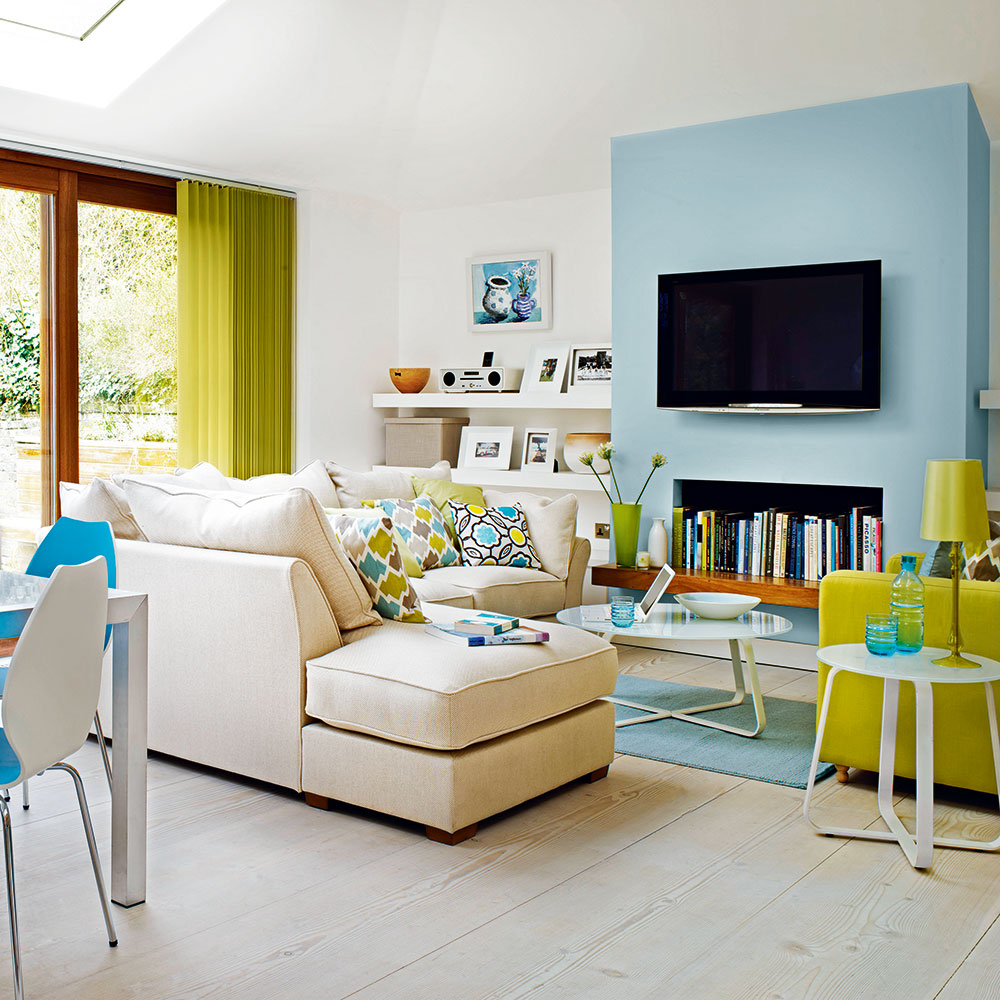Why you’re watching your TV all wrong
A few simple tweaks will give you a far better viewing experience – and you don't need to be an expert to make them!

Bancroft, I'm a Celebrity, Strictly, Peaky Blinders, Stranger Things... it really is prime TV season at the mo. But are you watching your TV all wrong? All sorts of things can affect the quality of the picture and the sound from your set. Fear not though – it's all easy enough to fix.
Follow our tips on how to set up your TV, compiled with help from one of our favourite experts – Panasonic's Content Development Supervisor and TV guru extraordinaire Michael Price – and have a very merry telly Christmas!
Related: 10 ways to disguise your TV
1. You're sitting the wrong distance away

You used to find that people sat too close to their TVs, but according to Panasonic, nowadays, the opposite is true. 'If anything, many people sit too far away!' says Michael 'We always used to recommend a sitting distance of 3x the size of the screen so, for a 40-inch TV, you would sit 120 inches away. However, now that most TVs now are 4K – and 4K is all about detail – sitting 10 feet from a 40-inch 4K TV is too far away to appreciate that extra detail. Your eyes just can’t see it.
'If you are watching 4K, I would say sitting a distance of between 2 and 2.5x the screen size is better… or buy a bigger screen!'
2. The colours are too saturated
The colours being too saturated is the number one error when people set up their TVs. There is always the feeling that more is more – so contrast, and colour are turned up all the way – but actually this makes the picture look less realistic and more artificial. Skin tone is a dead giveaway – if everyone looks like they have an orange tan (and you're not watching TOWIE), the colour is set too high.
3. The brightness is set too high

High brightness is useful if you have a very bright room, but most living rooms won’t be like that, especially in the evening. If there is a big difference between the brightness level in the room and the brightness on your TV, it can tiring on the eyes. That's because your pupils will be constantly closing and opening as you look at the TV and then look away. Turn down the brightness at night; or use the 'Cinema' mode; or look out for a TV that has an 'Ambient Sensor' and make sure it's turned on. This measures the light in the room and automatically adjusts the TV.
Sign up to our newsletter for style inspiration, real homes, project and garden advice and shopping know-how
4. Your TV is stuck in 'shop' mode
Another reason you might have the TV too bright is that it is stuck in a 'shop' mode, often called something like 'Dynamic' or 'Vivid' . In store, TVs are set to as bright as possible, so that they grab your attention as you are wandering the aisles. So if you buy an ex-display TV and then get it home, you'll need to switch it out of that mode in order to get a more subtle, realistic image.
Even if you do manage to switch modes, you might find that after a while, your TV resets itself back to the Dynamic or Vivid mode. To prevent that from happening, you'll need to do a complete reset of the TV, by looking for 'Shipping Condition' or similar in the menu. If you are buying a TV that is an ex-display model, it's worth asking the store to reset it for you before you take it home.
5. It's in the wrong place

For decent sound, the most important thing to keep in mind is where your TV is placed. If you look at most TVs these days, the speakers cannot be seen – this is because they are on the bottom facing down, or even backwards. This helps TVs to have that slim frame look we expect these days.
'If the speakers are not facing the front, it really matters what’s behind the TV,' says Michael. 'Most TV speakers will sound completely different if the TV is on the wall or on a table. Look in the sound menu for a setting for wall mounting or Distance to the Wall. For example, Panasonic TVs have different modes depending if the wall is more than 30cm behind the TV, or less than 30cm.'
6. You haven't adjusted your input settings
Now this might sound a bit techie – but don't worry, it really isn't. You'll just have to bear with us through the technical terminology!
If you're watching a film on Blu-ray, and want it to look exactly as it did in the cinema, go into the motion processing settings in the menu and turn them off. If you're unsure where these are, they'll usually go by an acronym like IFC (Intelligent Frame Creation) or CMR (Clear Motion Rate). So why turn them off? Because motion processing on a very high-quality input like Blu-ray can sometimes introduce unwanted effects. The picture won’t be as super smooth, but it wasn’t super smooth in the cinema!
'The other input it is really important to adjust is your games console,' Michael explains. 'Here, the emphasis is on speed – when you tell your avatar to go left by pushing a button, you want the screen to react instantly. For this reason, most TVs have a game mode which switches off a lot of the TVs processing in order to improve response time. On a fast TV – like our Panasonic EX700 – you can literally feel the difference when you switch on the game mode.'
Buy now: PANASONIC TX-40EX700B 40-inch Smart 4K Ultra HD HDR LED TV, £489, Currys
Now, all you need to do is grab your remote and start familiarising yourself with the settings. A few button presses could make all the difference to your Christmas viewing!

Amy Cutmore is an experienced interiors editor and writer, who has worked on titles including Ideal Home, Homes & Gardens, LivingEtc, Real Homes, GardeningEtc, Top Ten Reviews and Country Life. And she's a winner of the PPA's Digital Content Leader of the Year. A homes journalist for two decades, she has a strong background in technology and appliances, and has a small portfolio of rental properties, so can offer advice to renters and rentees, alike.